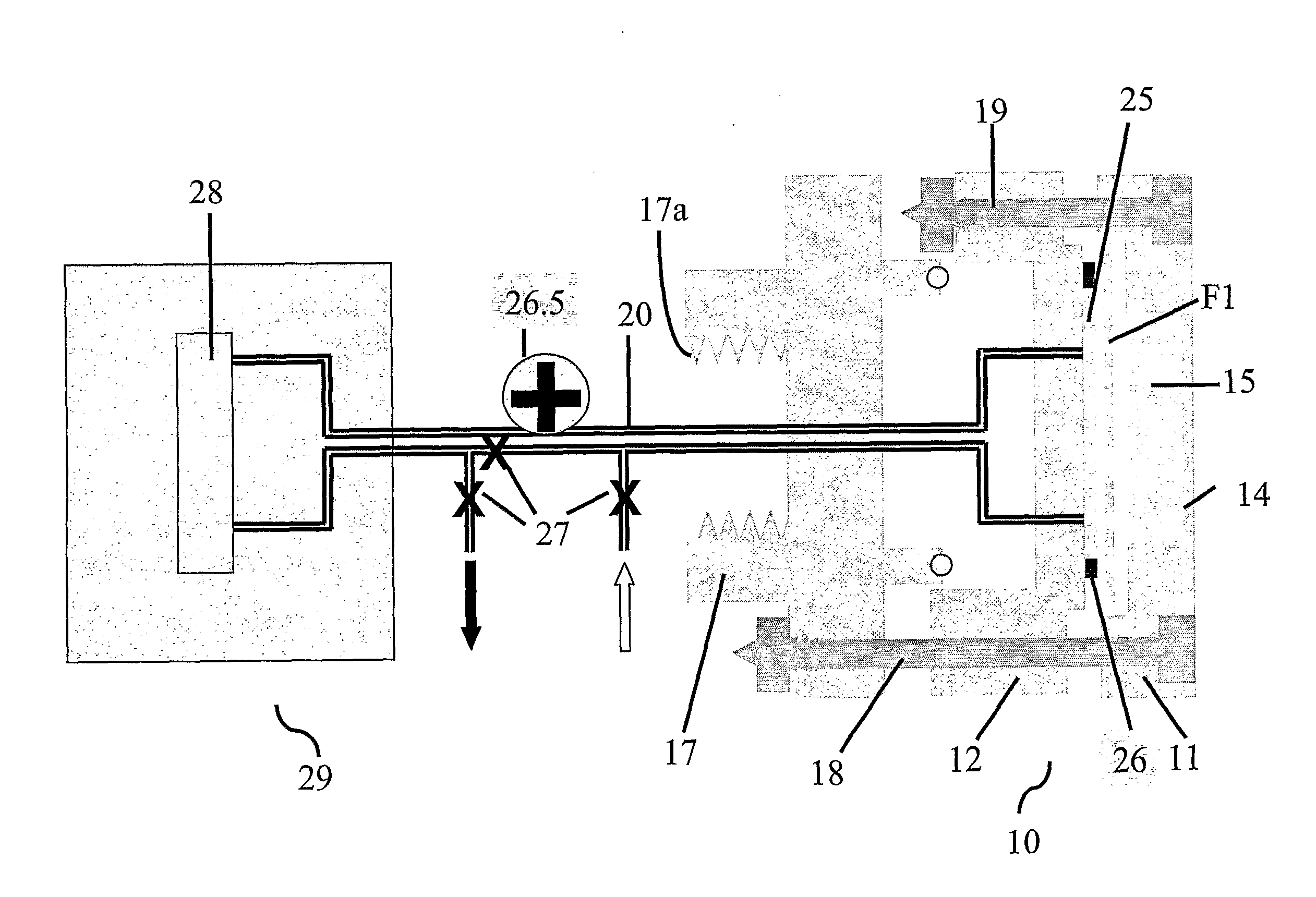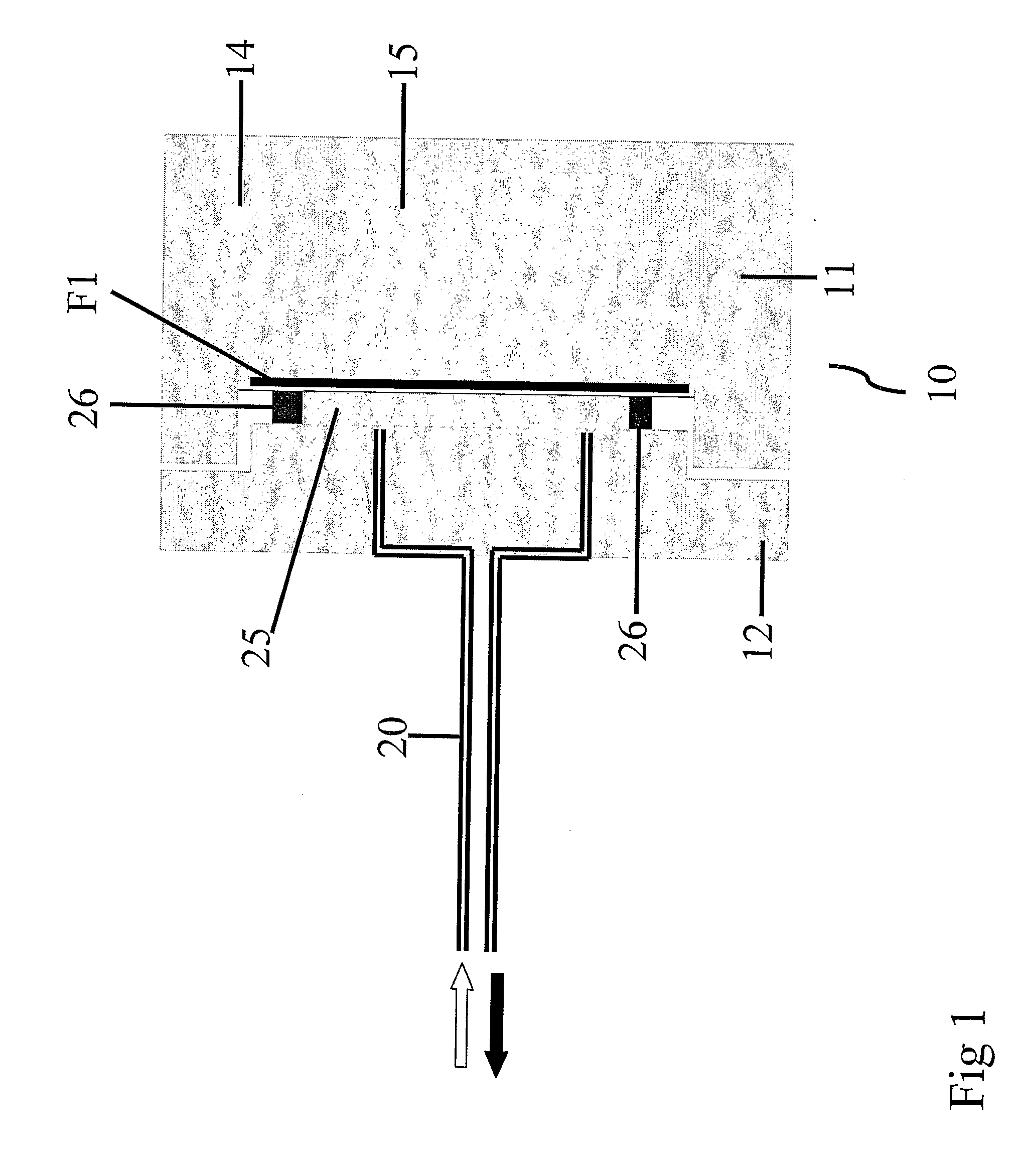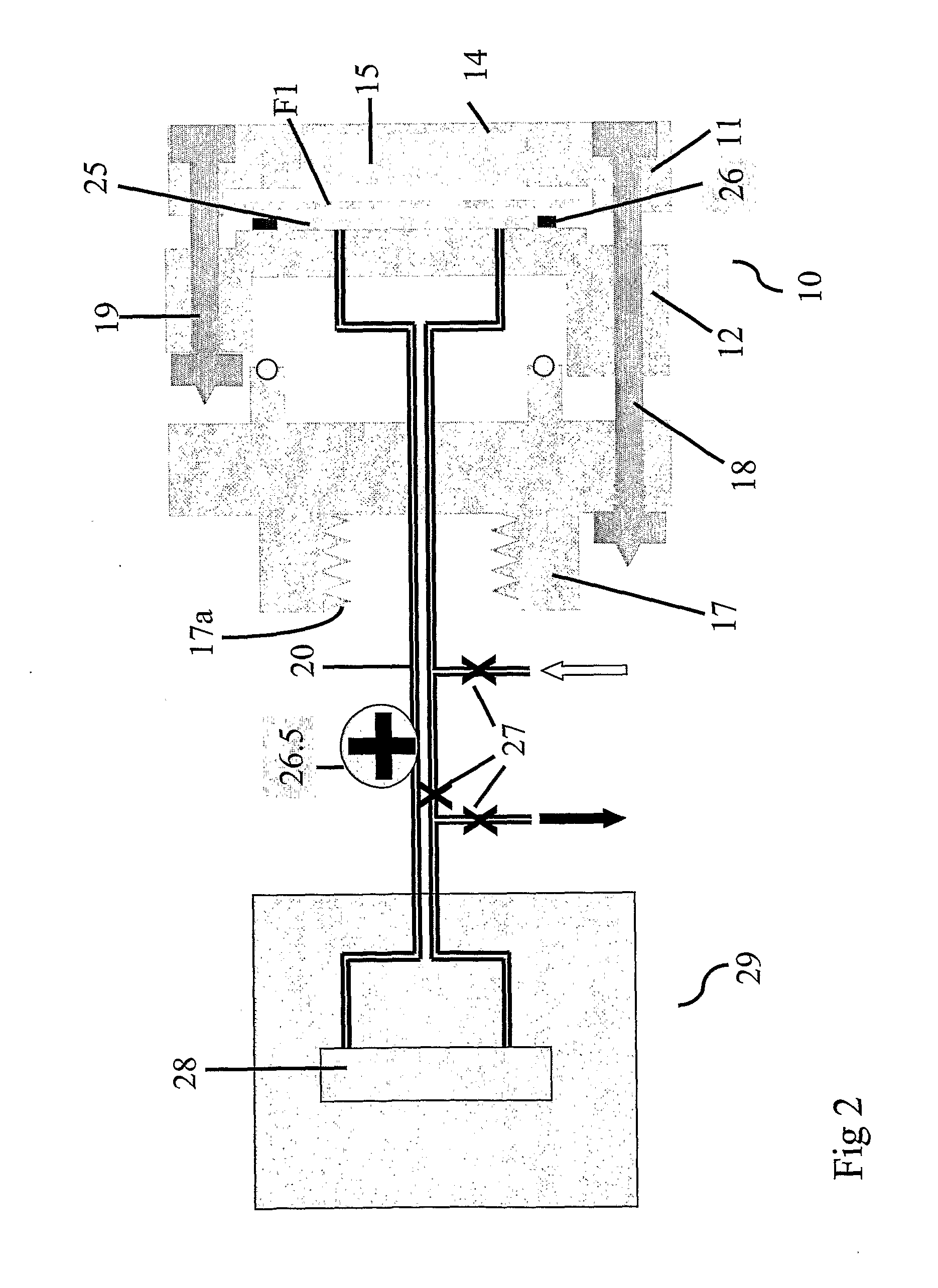Bioreactor for cell and tissue culture
a cell and tissue culture and bioreactor technology, applied in the field of bioreactors or culture vessels, can solve the problems of affecting cell growth, moisture loss, and limited use of microgravity bioreactors
- Summary
- Abstract
- Description
- Claims
- Application Information
AI Technical Summary
Benefits of technology
Problems solved by technology
Method used
Image
Examples
example 1
Maintenance of Differentiation State of Human Liver Cells in Long-Term Culture: Expression of Cellular Proteins
[0222]Specific proteins expressed by fully differentiated human liver and not typically found in hepatocytes grown under normal—flat-culture conditions are found in cells cultured using a bioreactor of the present invention. The fully differentiated liver cell proteins can still be found after 302 days in culture.
[0223]Human hepatocytes were grown in a bioreactor of the present invention for 302 days and then labelled with [35S}-methionine for 20 hrs.
[0224]The one or more cell cultures are cultivated as described above under normal culture conditions (e.g. 37° C. for human cells), using culture media like Eagles, DMEM or RPMI 1640. Culture media needs to be changed every second or third day depending on the particular cell culture in question. Liver cells require fresh media every second day. The media is changed by stopping the rotation of the bioreactor, waiting for the c...
example 2
Maintenance of Differentiation State of Human Liver Cells in Long-Term Culture: Viability of Secretory Mechanisms
[0228]Specific proteins secreted by fully differentiated normal human adult liver and not typically secreted by hepatocytes grown under normal—flat-culture conditions are secreted by hepatocytes cultured under microgravity conditions using a bioreactor of the present invention.
[0229]Proteins were precipitated from aliquots of growth medium from the tissue cultures of example 1 and analysed by two dimensional gel electrophoresis and mass spectrometry. The proteins are identified by protein, accession number and protein description in Table 2. The number of isoforms identified relates to the number of gel spots that were positively identified as the protein in question.
TABLE 2Proteins secreted by fully differentiated liver cells found in bioreactorculture media and not typically secreted by hepatocytes grown undernormal - flat-culture conditions.Protein descriptionProteinAc...
PUM
| Property | Measurement | Unit |
|---|---|---|
| Temperature | aaaaa | aaaaa |
| Fraction | aaaaa | aaaaa |
| Fraction | aaaaa | aaaaa |
Abstract
Description
Claims
Application Information
 Login to View More
Login to View More - R&D
- Intellectual Property
- Life Sciences
- Materials
- Tech Scout
- Unparalleled Data Quality
- Higher Quality Content
- 60% Fewer Hallucinations
Browse by: Latest US Patents, China's latest patents, Technical Efficacy Thesaurus, Application Domain, Technology Topic, Popular Technical Reports.
© 2025 PatSnap. All rights reserved.Legal|Privacy policy|Modern Slavery Act Transparency Statement|Sitemap|About US| Contact US: help@patsnap.com



